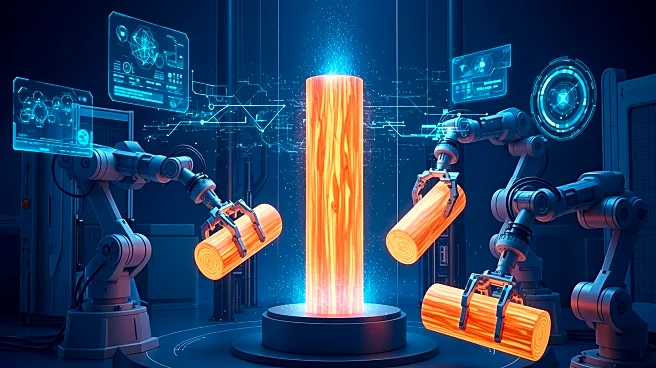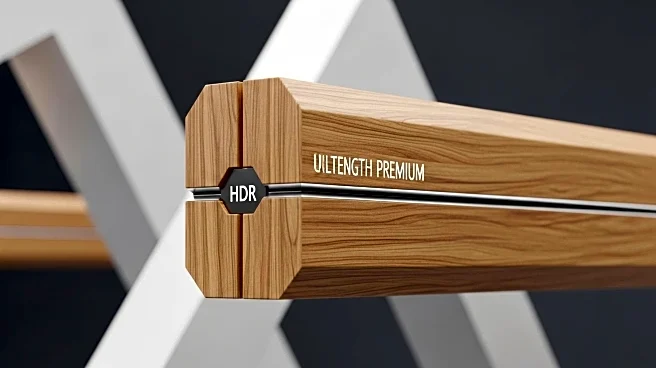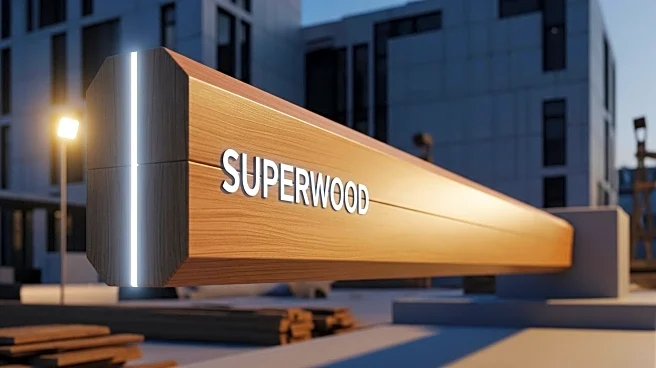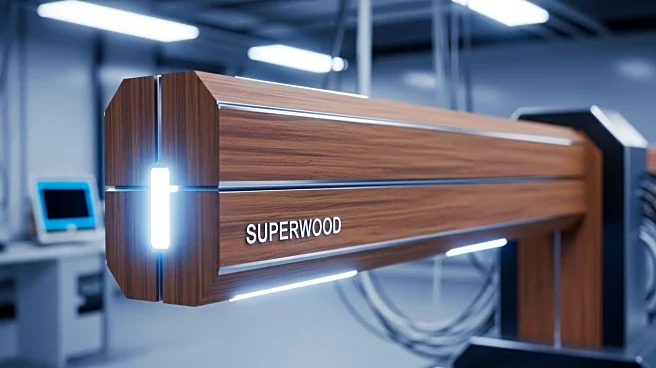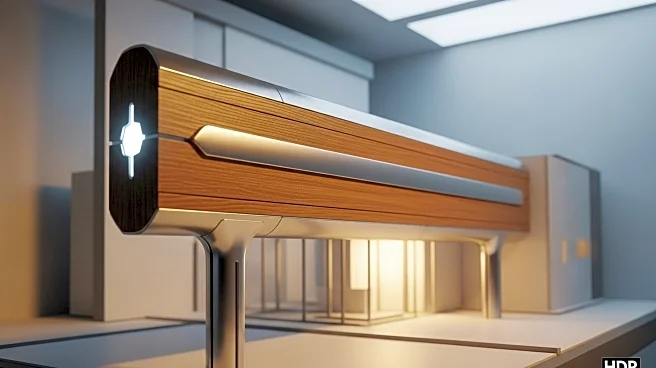What's Happening?
InventWood, a company based in Frederick, Maryland, has introduced a new product called Superwood, which aims to revolutionize the construction industry by offering a material that is significantly stronger
and lighter than steel. Developed by Liangbing Hu, a Yale professor, Superwood is the result of a decade-long research effort that began at the University of Maryland’s Center for Materials Innovation. The product is created through a two-step transformation process that modifies lignin and removes hemicellulose, followed by precision densification to enhance the wood's strength and stiffness. Superwood maintains the aesthetic qualities of natural wood while offering superior strength and dent resistance. The technology behind Superwood is protected by numerous patents, and the company plans to expand its applications from exterior uses like cladding and decking to interior products such as furniture. Superwood is currently undergoing third-party testing for building code approval, with production capacity for 2025 already fully allocated.
Why It's Important?
The introduction of Superwood represents a significant advancement in building materials, potentially altering the landscape of the construction industry. By offering a material that is both stronger and lighter than steel, Superwood could reduce construction costs and improve the sustainability of building projects. Its ability to maintain the aesthetic appeal of wood while providing enhanced durability makes it an attractive option for architects and builders. The product's development also highlights the role of innovation and research in creating environmentally friendly alternatives to traditional materials. As Superwood moves through testing and certification, it could become a preferred choice for structural applications, impacting industries reliant on steel and other conventional materials.
What's Next?
InventWood is focusing on securing building code approval for Superwood, which is crucial for its adoption in structural applications. The company plans to expand its product offerings to include interior applications, such as furniture, by next year. As Superwood gains certification, it is expected to attract interest from construction firms and architects looking for sustainable and cost-effective materials. The earliest availability for new orders is anticipated in 2026, indicating a growing demand for innovative building solutions. Stakeholders in the construction industry may need to adapt to this new material, potentially leading to shifts in market dynamics and material sourcing strategies.
Beyond the Headlines
The development of Superwood raises important questions about the future of sustainable building practices and the role of advanced materials in reducing environmental impact. As the construction industry seeks to lower its carbon footprint, materials like Superwood could play a pivotal role in achieving these goals. The product's ability to sequester carbon while providing enhanced performance may influence regulatory standards and encourage further research into bio-based materials. Additionally, the success of Superwood could inspire other innovations in material science, driving a broader shift towards eco-friendly construction solutions.


